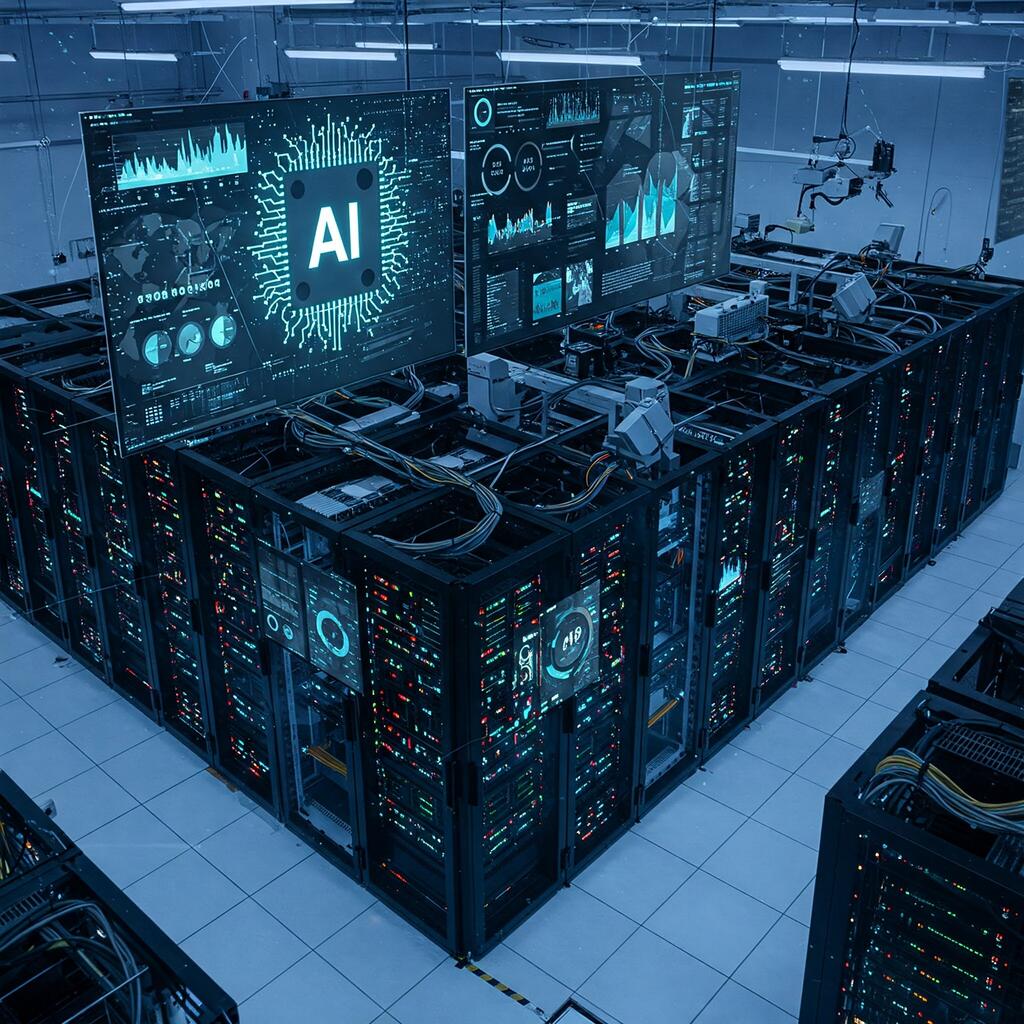
AI in IT: Opportunities, Challenges, and the Future
Artificial intelligence (AI) is emerging as one of the most powerful drivers of change in the technology landscape. It could push the IT sector toward new frontiers of innovation, efficiency, and productivity. According to a McKinsey Global Institute report, AI could contribute up to $13 trillion to the global economy by 2030, potentially altering the way businesses operate. What was once considered a niche technology is now deeply embedded in many critical areas of IT—from data management and cybersecurity to automation and predictive analytics. AI may not just be a tool; it could reshape the way entire industries might function in the near future.
AI as an Ally, Not a Threat
When AI is introduced into the workplace, concerns about job losses might arise. However, it is important to recognize that AI is not designed to replace humans but to augment human work. By automating repetitive and time-consuming tasks, AI could allow professionals to focus on more creative, strategic, and high-value activities, potentially strengthening teams and boosting the overall value of a business.
In this AI-driven world, the focus might shift from fearing job displacement to embracing new roles that AI technology could create. IT professionals may increasingly be needed to focus on optimizing processes, fostering innovation, and applying advanced analysis to complex problems. Rather than replacing jobs, AI could open up opportunities for employees to be reskilled, empowering them to take on more strategic roles while collaborating with AI systems.
While AI may automate numerous tasks, human judgment might remain a critical element in many processes, especially in areas where empathy, ethics, and creative problem-solving are needed. AI could be viewed as a partner in business rather than a threat to the workforce, enabling employees to enhance their capabilities and contribute to decision-making processes in ways that machines alone cannot.
AI Opportunities in IT
IT Process Automation
AI’s ability to automate IT processes could present some of the most significant opportunities for transformation. By handling repetitive tasks, AI might free up IT professionals to focus on more strategic initiatives that drive business growth. For instance, many routine IT operations—such as system monitoring, software patching, and resource allocation—could be automated, potentially leading to a significant increase in productivity and a decrease in human errors.
A concrete example of AI-driven process automation is Amazon's use of AI to manage and optimize its massive data centers. The AI algorithms might continuously monitor server performance, adjust resource allocation in real-time, and reduce human intervention. This automation could result in faster response times, lower operational costs, and more efficient resource use.
Cybersecurity
Cybersecurity could become an area where AI might make profound changes. AI-powered systems may now detect threats in real-time, identifying vulnerabilities and suspicious behavior, often before significant damage occurs. Unlike traditional methods that rely on post-incident analysis, AI could provide proactive protection by continuously monitoring data flows and flagging anomalies as they arise.
Companies such as Darktrace might be at the forefront of this shift, utilizing AI to monitor network traffic, detect malicious activity, and automatically initiate countermeasures, such as isolating compromised areas of the network. With the rise of increasingly sophisticated cyber threats, AI’s ability to enhance security could be a game-changer, helping businesses shift from reactive security strategies to ongoing, preemptive protection.
Resource Optimization and Data-Driven Decision-Making
AI could also reshape how IT resources are optimized. In cloud computing, AI might dynamically allocate resources based on real-time demand, ensuring that resources are used efficiently and waste is minimized. This could be particularly important in large-scale data centers where managing power consumption and resource allocation may significantly impact costs.
Google Cloud might be an excellent example of this in action. The company could use AI to optimize resource allocation across its network of data centers, allowing it to predict usage spikes and adjust resources in real-time. This approach could reduce energy consumption while enhancing overall performance by ensuring that resources are allocated precisely where and when they’re needed.
Moreover, AI could enhance decision-making across industries. By analyzing vast amounts of data quickly, AI may uncover trends and patterns that might otherwise be difficult for humans to identify. In this way, AI could enhance business decision-making, enabling more informed choices, automating routine decisions, and ultimately leading to better outcomes.
Enhancing User Experience
The way users interact with systems could undergo a revolution, thanks to AI. Digital assistants, chatbots, and voice recognition technologies might be just a few examples of how AI could create more natural, intuitive user experiences. These systems may be designed to understand context, engage with users in a more conversational manner, and offer personalized solutions, potentially making them much more efficient and user-friendly.
One of the most popular applications of AI in enhancing user experience might be Apple’s Siri. Over the years, Siri could evolve to better understand user requests, offering more accurate responses, adapting to the user’s preferences, and even anticipating needs. AI systems like Siri could fundamentally change how users interact with technology, offering a seamless and personalized experience.
Challenges in Adopting AI in IT
Costs and Implementation Complexity
Despite the significant advantages of AI, its adoption could come with its own set of challenges. The initial costs of AI implementation, including research, development, and infrastructure, might be high. Moreover, the complexity of integrating AI into existing systems and processes could create significant hurdles, especially for organizations that lack the necessary technical expertise.
Nevertheless, many businesses may view these costs as a long-term investment in operational efficiency and innovation. According to a report by Deloitte, 60% of companies still see cost as a significant barrier to AI adoption. However, as the technology matures and becomes more accessible, the cost of implementation could decrease, making it more affordable for companies of all sizes.
Privacy and Ethics
As AI becomes more deeply embedded in business operations, concerns about privacy, data security, and ethics could increase. Given the vast amounts of data AI systems process, ensuring that this data is handled securely and in compliance with privacy regulations—such as the GDPR in Europe—might be essential.
AI systems could also raise ethical questions, particularly regarding the transparency of algorithms and the potential for bias. Many AI systems may operate as “black boxes,” where the decision-making process is not always clear. Ensuring that AI is used ethically will require developing standards for transparency, accountability, and fairness.
Training and Required Skills
The widespread adoption of AI might present challenges related to the shortage of qualified professionals. AI requires expertise in advanced mathematics, programming, and machine learning—skills that are in short supply. This could create a significant talent gap in the industry.
However, this challenge could also present an opportunity for organizations to invest in continuous training and development. By upskilling their existing IT workforce, companies might reduce their reliance on external experts and foster internal innovation.
Preparing for AI Adoption in IT
Continuous Training
Investing in continuous education may be vital for preparing the workforce for AI adoption. As AI technologies evolve rapidly, organizations must ensure that their teams are equipped with both technical and soft skills. This might include training in areas such as data management, machine learning, and AI integration.
Adapting Organizations to New Technologies
Successful AI adoption could require organizations to shift their mindset and culture. Companies may need to embrace a culture of experimentation, collaboration, and adaptability. Adapting organizational structures, processes, and workflows to accommodate AI could enable businesses to respond more effectively to the challenges and opportunities presented by the technology.
The Future of AI in IT
AI’s potential is vast, and as the technology continues to evolve, its integration with emerging technologies like 5G, blockchain, and IoT could unlock new possibilities for data efficiency, security, and real-time decision-making. In industries such as finance, healthcare, and automotive, AI could lead to unprecedented levels of innovation and efficiency, providing organizations with a competitive edge.
Adopting AI might not be just about the implementation of new tools but also about cultivating a culture of innovation. As AI continues to evolve, organizations that embrace it could be better positioned to navigate future challenges and lead in their industries.






















